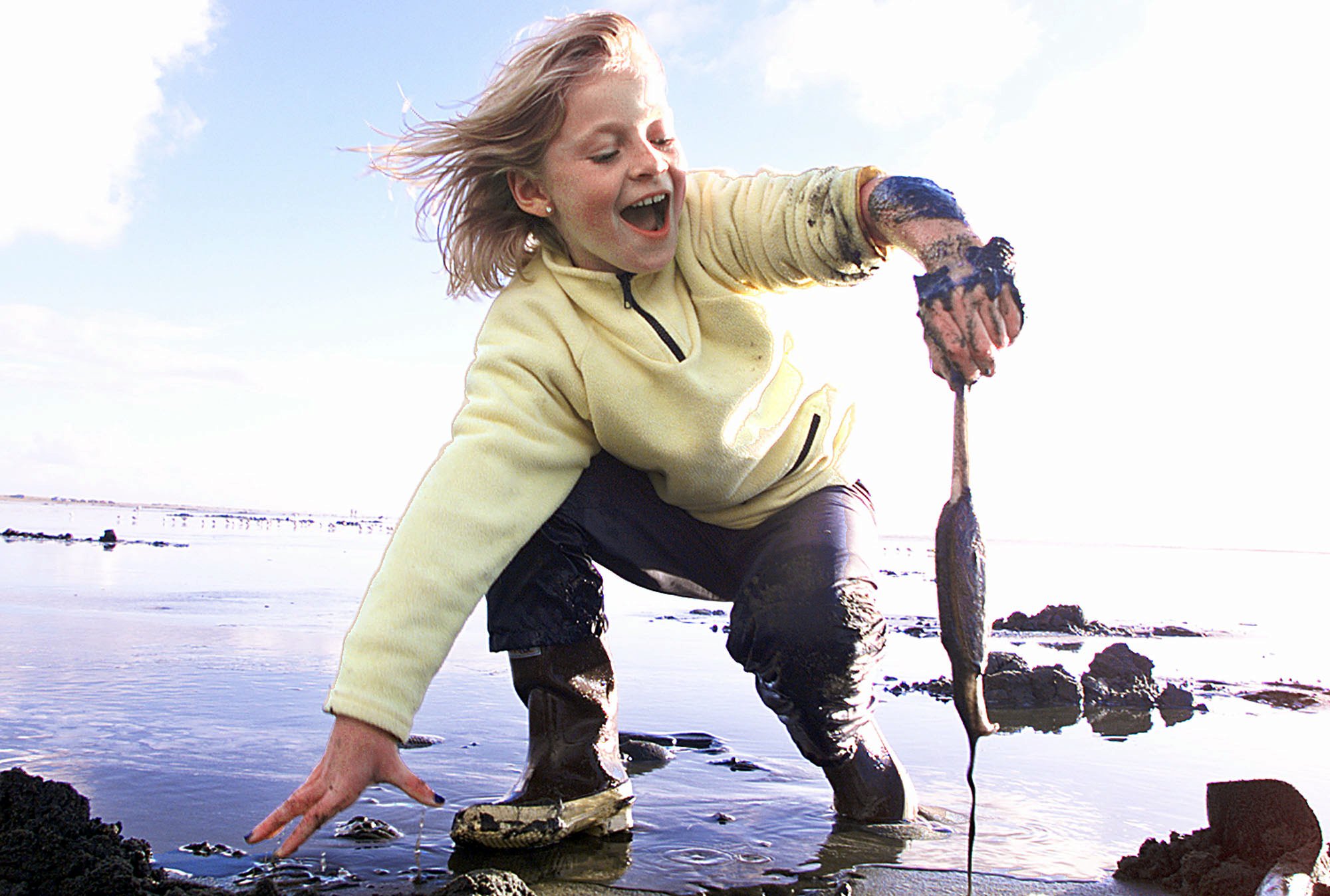The coastal razor clam seasons are just around the corner, and expectations are high heading into fall and should remain that way well into spring.
“The razor clam populations are up overall, and on some beaches they’re up considerably,” said Dan Ayres, the head state Fish and Wildlife coastal shellfish manager. “The good news is we’ll see a lot more digging opportunities on all the beaches (except for Kalaloch) than we’ve seen in a long time.”
“The only downside is a lot of the clams are new to the fishery, and are on the small size, but we’ll still have some bigger clams mixed in,” Ayres said. “The smaller clams will grow rather quickly, and it’ll be a stupendous season in winter and spring.”
That is a much brighter picture compared to when the 2011-12 season began, and state Fish and Wildlife shellfish managers felt they’d be reluctant make it to this past spring.
The reason behind that skepticism was a major decline in clams particularly at Copalis Beach, and a few other locations.
However, bad winter weather meant smaller crowds at beaches and less clams harvested, which resulted in some staying open until May.
A total of 195,000 digger trips were made last season with about 2.6-million harvested for an average of 13.2 clams per person (the first 15 clams dug regardless of size or condition is a daily limit).
That compares to the 2010-11 season when 244,500 digger trips were made with 3.2-million dug for a 13.1 average.
The harvest levels this past season at Twin Harbors was lower than the past few years, and less clams at Copalis brought down the total number of clams dug. Long Beach saw a standard season.
Mocrocks had more clams last year, and there were almost 100,000 more clams dug than over the previous 10 year average so it remains in good shape moving forward.
Past spawning success at Mocrocks has led to an increased level of recruit-sized clams and the current population is just above the five-year average for both adult and juvenile clams. Early stock assessments at Long Beach showed a strong recruitment of young clams.
Marine toxin levels for razor clams have remained low so far on all beaches except for a really high level of Paralytic Shellfish Poisoning (PSP) at Mukkaw Bay near Neah Bay.
“It is not indicative to anywhere else on the coast, and hopefully just an isolated event,” said Ayres. “The level was over 500 (parts per million) and the action level is 80. The last time we had such an event where all the beaches were closed was back in 2002.”
“We should have final word on seasons by the end of September or early October,” Ayres said. “There are a couple of good low tide series at end of October. They occur late in the evening so we’ll be doing some digging in the dark.”
State Fish and Wildlife plans to have the coastal razor clam assessment up for public review on their website (http://wdfw.wa.gov/) by the second week of September. There are no public meetings planned and comments can be sent via email.
“Since we’ve got the extra clams available that will give us a lot more latitude to probably announce the digs (for winter and spring) all at once,” Ayres said.



